10 Books Published by University of Missouri on AALBC — Book Cover Collage
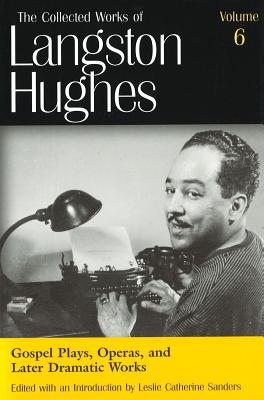 Gospel Plays, Operas, and Later Dramatic Works
Gospel Plays, Operas, and Later Dramatic Works
by Langston HughesUniversity of Missouri Press (Oct 08, 2018)
Read Detailed Book Description
About the Editor
Leslie Catherine Sanders is on the faculty at York University and is the cofounder of the Centre for the Study of Black Cultures in Canada. She is the author of The Development of Black Theater in America and coeditor of The Collected Works of Langston Hughes, Volume 5, The Plays to 1942: Mulatto to The Sun Do Move.
About the Author
Langston Hughes was one of the most influential and prolific writers of the twentieth century.
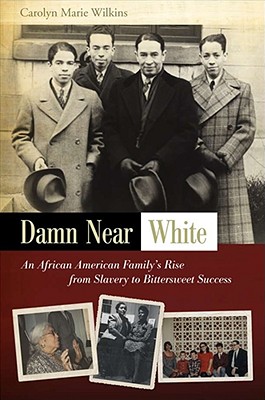 Damn Near White: An African American Family’s Rise From Slavery To Bittersweet Success
Damn Near White: An African American Family’s Rise From Slavery To Bittersweet Success
by Carolyn Marie WilkinsUniversity of Missouri Press (Oct 10, 2010)
Read Detailed Book Description
Carolyn Wilkins grew up defending her racial identity. Because of her light complexion and wavy hair, she spent years struggling to convince others that she was black. Her family’s prominence set Carolyn’s experiences even further apart from those of the average African American. Her father and uncle were well-known lawyers who had graduated from Harvard Law School. Another uncle had been a child prodigy and protégé of Albert Einstein. And her grandfather had been America’s first black assistant secretary of labor.
Carolyn’s parents insisted she follow the color-conscious rituals of Chicago’s elite black bourgeoisie—experiences Carolyn recalls as some of the most miserable of her entire life. Only in the company of her mischievous Aunt Marjory, a woman who refused to let the conventions of “proper” black society limit her, does Carolyn feel a true connection to her family’s African American heritage.
When Aunt Marjory passes away, Carolyn inherits ten bulging scrapbooks filled with family history and memories. What she finds in these photo albums inspires her to discover the truth about her ancestors—a quest that will eventually involve years of research, thousands of miles of travel, and much soul-searching.
Carolyn learns that her great-grandfather John Bird Wilkins was born into slavery and went on to become a teacher, inventor, newspaperman, renegade Baptist minister, and a bigamist who abandoned five children. And when she discovers that her grandfather J. Ernest Wilkins may have been forced to resign from his labor department post by members of the Eisenhower administration, Carolyn must confront the bittersweet fruits of her family’s generations-long quest for status and approval.
Damn Near White is an insider’s portrait of an unusual American family. Readers will be drawn into Carolyn’s journey as she struggles to redefine herself in light of the long-buried secrets she uncovers. Tackling issues of class, color, and caste, Wilkins reflects on the changes of African American life in U.S. history through her dedicated search to discover her family’s powerful story.
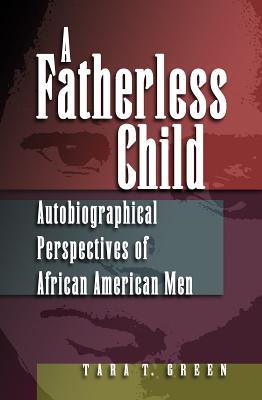 A Fatherless Child: Autobiographical Perspectives of African American Men
A Fatherless Child: Autobiographical Perspectives of African American Men
by Tara T. GreenUniversity of Missouri Press (Mar 09, 2009)
Read Detailed Book Description
The impact of absent fathers on sons in the Black community has been a subject for cultural critics and sociologists who often deal in anonymous data. Yet many of those sons have themselves addressed the issue in autobiographical works that form the core of African American literature.
A Fatherless Child examines the impact of fatherlessness on racial and gender identity formation as seen in Black men’s autobiographies and in other constructions of Black fatherhood in fiction. Through these works, Tara T. Green investigates what comes of abandonment by a father and loss of a role model by probing a son’s understanding of his father’s struggles to define himself and the role of community in forming the son’s quest for self-definition in his father’s absence.
Closely examining four works—Langston Hughes’s The Big Sea, Richard Wright’s Black Boy, Malcolm X’s The Autobiography of Malcolm X, and Barack Obama’s Dreams from My Father—Green portrays the intersecting experiences of generations of Black men during the twentieth century both before and after the Civil Rights movement. These four men recall feeling the pressure and responsibility of caring for their mothers, resisting public displays of care, and desiring a loving, noncontentious relationship with their fathers. Feeling vulnerable to forces they may have identified as detrimental to their status as Black men, they use autobiography as a tool for healing, a way to confront that vulnerability and to claim a lost power associated with their lost fathers.
Through her analysis, Green emphasizes the role of community as a father-substitute in producing successful Black men, the impact of fatherlessness on self-perceptions and relationships with women, and Black men’s engagement with healing the pain of abandonment. She also looks at why these four men visited Africa to reclaim a cultural history and identity, showing how each developed a clearer understanding of himself as an American man of African descent.
A Fatherless Child conveys important lessons relevant to current debates regarding the status of African American families in the twenty-first century. By showing us four Black men of different eras, Green asks readers to consider how much any child can heal from fatherlessness to construct a positive self-image—and shows that, contrary to popular perceptions, fatherlessness need not lead to certain failure.
![Click for more detail about The City Of Refuge [New And Expanded Edition]: The Collected Stories Of Rudolph Fisher by Rudolph Fisher](https://aalbc.com/bookcovers/9780826218124.jpg) The City Of Refuge [New And Expanded Edition]: The Collected Stories Of Rudolph Fisher
The City Of Refuge [New And Expanded Edition]: The Collected Stories Of Rudolph Fisher
by Rudolph FisherUniversity of Missouri Press (Nov 03, 2008)
Read Detailed Book Description
One of the premier writers of the Harlem Renaissance, Rudolph Fisher wrote short stories depicting the multifaceted black urban experience that are still acclaimed today for their humor, grace, and objective view of Harlem life. Through his words, wrote the New York Times Book Review, “one feels, smells, and tastes his Harlem; its people come alive and one cares about them.” A definitive collection of Fisher’s short stories, The City of Refuge offers vibrant tales that deal with the problems faced by newcomers to the city, ancestor figures who struggle to instill a sense of integrity in the young, problems of violence and vengeance, and tensions of caste and class. This anthology has now been expanded to include seven previously unpublished stories that take up such themes as marital infidelity and passing for black and also relate the further adventures of Jinx and Bubber, the comic duo who appeared in Fisher’s two novels. This new edition also includes two unpublished speeches and the popular article “The Caucasian Storms Harlem,” describing the craze for black music and dance. John McCluskey’s introduction has been updated to place the additional works within the context of Fisher’s career while situating his oeuvre within the broader context of American writing during the twenties. Fisher recognized the dramatic and comic power in African American folklore and music and frequented Harlem’s many cabarets, speakeasies, and nightclubs, and at the core of his work is a strong regard for music as context and counterpoint. The City of Refuge now better captures the sounds of the city experience by presenting all of Fisher’s known stories. It offers a portrait of Harlem unmatched in depth and range by Fisher’s contemporaries or successors, celebrating, as Booklist noted, “the complexity of black urban life in its encounter with the dangers and delights of the city.” This expanded edition adds new perspectives to that experience and will enhance Fisher’s status for a new generation of readers.
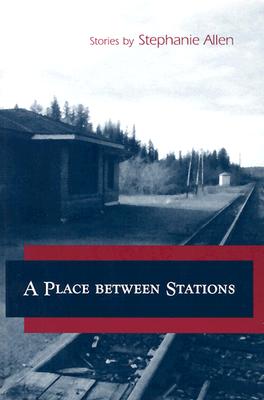 A Place Between Stations
A Place Between Stations
by Stephanie AllenUniversity of Missouri Press (Feb 03, 2003)
Read Detailed Book Description
Selma detests my small considerations of strangers. When she catches me nodding at the panhandlers she ignores, or opening doors for women I don’t know, she says nothing, but holds herself tall and aloof. She is doing it for the both of us. She is compensating for what she believes is a weakness in her husband that, even in this day and age, a black man still cannot afford. And she may be right. But at this stage of my life I feel not so much black or male, middle-aged or well-to-do or professional, as incomplete. I am son to my father, father to my boys, husband to my unhappy wife, but somehow more lost than found in the mix.A Place between Stations explores the lives of African American characters against the ever-present backdrop of race, but with the myriad complexities of individual minds and souls in the foreground.Two college students, bound by an intense but uneasy friendship, take an increasingly dangerous road trip through Florida. A widow faces her doubts about her long-dead husband by reliving an odd series of train rides she took along the Hudson River shoreline in the 1950s. An angry, fatherless girl roams a city at night, searching for an escape from the ambiguities of childhood. George Mattie, loner and reluctant guide, leads a misfit nineteenth-century circus caravan on an ill-fated journey through the northern Connecticut woods. In A Place between Stations, Stephanie Allen enlarges contemporary notions of what African American lives can be. Varied, to the point, and beautifully composed, this collection will appeal to all audiences.
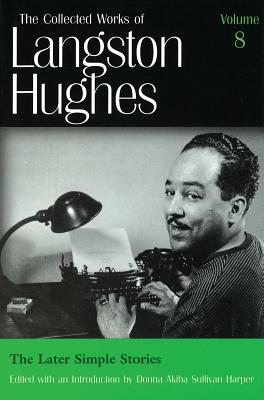 The Later Simple Stories
The Later Simple Stories
by Langston HughesUniversity of Missouri Press (Jun 11, 2002)
Read Detailed Book Description
About the Editor
Donna Akiba Sullivan Harper is Professor of English at Spelman College in Atlanta. She is the author of Not So Simple: The "Simple" Stories of Langston Hughes and the editor of The Collected Works of Langston Hughes, Volume 7: The Early Simple Stories.
Langston Hughes was one of the most influential and prolific writers of the twentieth century.
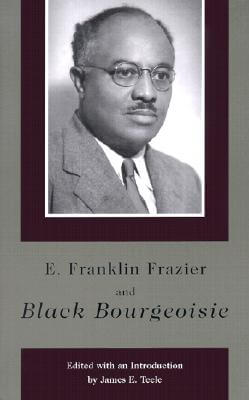 E. Franklin Frazier and Black Bourgeoisie
E. Franklin Frazier and Black Bourgeoisie
by James E. TeeleUniversity of Missouri Press (May 02, 2002)
Read Detailed Book Description
When E. Franklin Frazier was elected the first black president of the American Sociological Association in 1948, he was established as the leading American scholar on the black family and was also recognized as a leading theorist on the dynamics of social change and race relations. By 1948 his lengthy list of publications included over fifty articles and four major books, including the acclaimed Negro Family in the United States. Frazier was known for his thorough scholarship and his mastery of skills in both history and sociology.With the publication of Bourgeoisie Noire in 1955 (translated in 1957 as Black Bourgeoisie), Frazier apparently set out on a different track, one in which he employed his skills in a critical analysis of the black middle class. The book met with mixed reviews and harsh criticism from the black middle and professional class. Yet Frazier stood solidly by his argument that the black middle class was marked by conspicuous consumption, wish fulfillment, and a world of make-believe. While Frazier published four additional books after 1948, Black Bourgeoisie remained by far his most controversial.Given his status in American sociology, there has been surprisingly little study of Frazier’s work. In E. Franklin Frazier and Black Bourgeoisie, a group of distinguished scholars remedies that lack, focusing on his often-scorned Black Bourgeoisie.This in-depth look at Frazier’s controversial publication is relevant to the growing concerns about racism, problems in our cities, the limitations of affirmative action, and the promise of self-help.
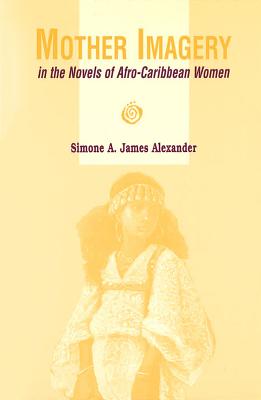 Mother Imagery in the Novels of Afro-Caribbean Women
Mother Imagery in the Novels of Afro-Caribbean Women
by Simone A. James AlexanderUniversity of Missouri Press (Jan 29, 2001)
Read Detailed Book Description
Focusing on specific texts by Jamaica Kincaid, Maryse Cond�, and Paule Marshall, this fascinating study explores the intricate trichotomous relationship between the mother (biological or surrogate), the motherlands Africa and the Caribbean, and the mothercountry represented by England, France, and/or North America. The mother-daughter relationships in the works discussed address the complex, conflicting notions of motherhood that exist within this trichotomy. Although mothering is usually socialized as a welcoming, nurturing notion, Alexander argues that alongside this nurturing notion there exists much conflict. Specifically, she argues that the mother-daughter relationship, plagued with ambivalence, is often further conflicted by colonialism or colonial intervention from the "other," the colonial mothercountry.
Mother Imagery in the Novels of Afro-Caribbean Women offers an overview of Caribbean women’s writings from the 1990s, focusing on the personal relationships these three authors have had with their mothers and/or motherlands to highlight links, despite social, cultural, geographical, and political differences, among Afro-Caribbean women and their writings. Alexander traces acts of resistance, which facilitate the (re)writing/righting of the literary canon and the conception of a "newly created genre" and a "womanist" tradition through fictional narratives with autobiographical components.
Exploring the complex and ambiguous mother-daughter relationship, she examines the connection between the mother and the mother’s land. In addition, Alexander addresses the ways in which the absence of a mother can send an individual on a desperate quest for selfhood and a home space. This quest forces and forges the creation of an imagined homeland and the re-validation of "old ways and cultures" preserved by the mother. Creating such an imagined homeland enables the individual to acquire "wholeness," which permits a spiritual return to the motherland, Africa via the Caribbean. This spiritual return or homecoming, through the living and practicing of the old culture, makes possible the acceptance and celebration of the mother’s land.
Alexander concludes that the mothers created by these authors are the source of diasporic connections and continuities. Writing/righting black women’s histories as Kincaid, Cond�, and Marshall have done provides a clearing, a space, a mother’s land, for black women. Mother Imagery in the Novels of Afro-Caribbean Women will be of great interest to all teachers and students of women’s studies, African American studies, Caribbean literature, and diasporic literatures.
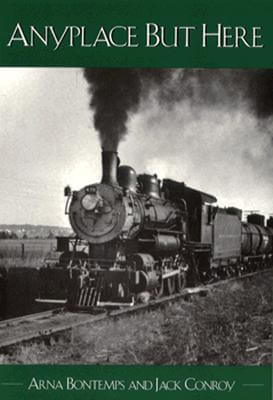 Anyplace But Here
Anyplace But Here
by Arna BontempsUniversity of Missouri Press (Apr 17, 1997)
Read Detailed Book Description
Originally published in 1945 as They Seek a City, this classic was revised and expanded in 1966 to include chapters on Marcus Garvey, the Black Muslims, Malcolm X, and the racial disturbances in Detroit, Chicago, and Watts. Filled with stories about real men and women who sought a new life in the North, Anyplace But Here depicts the theme of hope, undercut by disappointment, and hope renewed as it details the African American’s search for a home.
 The Color Line: Legacy for the Twenty-First Century (BRICK LECTURE SERIES)
The Color Line: Legacy for the Twenty-First Century (BRICK LECTURE SERIES)
by John Hope FranklinUniversity of Missouri Press (Mar 01, 1994)
Read Detailed Book Description
Nearly twenty years after his book Racial Equality in America, Franklin addressed the issue of racial inequality. In the Paul Anthony Brick Lectures given at the University of Missouri-Columbia, just one day after the "not guilty" verdict was returned in the trial of Los Angeles police officers for the beating of Rodney King, Franklin delivered a piercing depiction of the color line that persists in America. A scathing portrait of how discrimination has been allowed to flourish and a poignantly despairing prognosis for its end, The Color Line: Legacy for the Twenty-First Century is a perfect companion to the earlier volume. Together these books powerfully define and describe the long-held, but still unrealized, goal of equal rights for all Americans.
